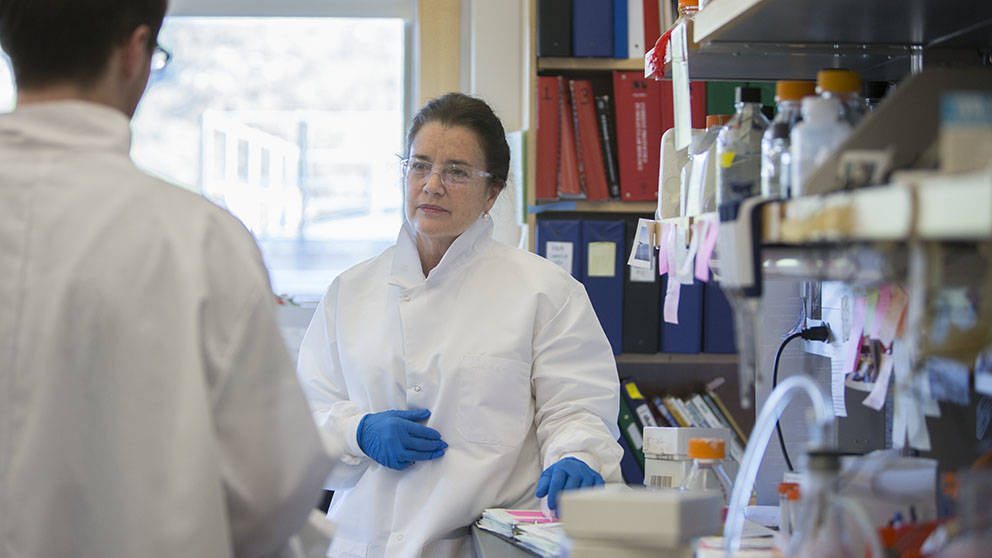
The JAX headquarters in Bar Harbor, Maine, is halfway around the globe from Monash University in Melbourne, Australia, but the two institutions share strong research connections thanks to JAX Professor and Scientific Director Nadia Rosenthal, Ph.D.
Rosenthal’s mission to expand mouse genetics in the international biomedical research community includes establishing the mouse biology program for the European Molecular Biology Laboratory (EMBL), a Rome-based network of biomedical research institutes.
In 2009, Rosenthal brought Australian laboratories into EMBL as the first non-European members. That year she also established the Australian Institute of Regenerative Medicine at Monash University, which now leads Australia in biomedical research grants.
The team of scientists that Rosenthal brought with her from Australia to JAX has wide-ranging research interests, including the genetics of muscle and heart development, immune control of cardiac disease and the regeneration of adult tissues.
Research scientist and Australian native James Godwin, Ph.D., who also has a joint appointment at the Mount Desert Island Biological Laboratory a few miles from JAX, studies the regenerative powers of axolotl salamanders to develop strategies to improve repair of human tissues after surgery, disease or traumatic injury.
“I wanted to move my discoveries in the salamander regeneration model into mouse models to try and stimulate regeneration in mammals,” Godwin says. “The Jackson Laboratory gives me affordable access to all the mouse strains not possible in Australia on a small junior faculty budget.”
He says his accountant wife, Michelle, is also “flourishing” in her new role in the JAX finance office. “Bar Harbor is very different from Australia, but we both love the adventure.”
Just a few months after the Rosenthal lab moved to America, JAX and Monash University entered into an agreement to establish cooperative research exchange opportunities for short- and long-term faculty and students, and to partner together in new education training and research initiatives.
“Breakthroughs in science ultimately depend on the quality of the scientists,” Rosenthal says. “Australia has a strong tradition and firm foundations in scientific endeavor, contributing two percent of the world’s knowledge from a population of only 24 million. I’m capitalizing on my global network of research colleagues to forge new international connections and opportunities with the Australian research community.”
Rosenthal’s international network of scientific contacts has brought other Australian investigators to spend time at JAX for collaborative research. Sarah Stephenson, Ph.D., based at Murdoch Children's Research Institute in Melbourne, spent eight weeks at JAX last year to fast-track her studies of Parkinson’s disease by using a new kind of experimental platform: genetically diverse mouse colonies known as the Collaborative Cross.
“These mice offer an opportunity to ask and answer questions that we haven't had before,” says Stephenson. “We’re in a new era where we can really start teasing out how genes are interacting with each other.”
An important goal, she says, is to develop new and better mouse models for Parkinson’s disease that can be shared with researchers worldwide and used for drug discovery.
“For what I’m trying to do, everyone has told me, ‘You have to do that at JAX.’”